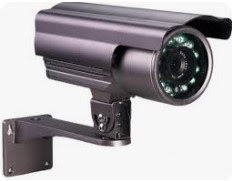IP CCTV Cameras, or Internet Protocol Closed-Circuit Television Cameras, represent a modern and advanced approach to video surveillance. Unlike traditional analog cameras, IP CCTV cameras use digital technology to transmit and receive data over a network, typically the Internet. This technology offers numerous advantages in terms of image quality, scalability, remote accessibility, and integration with other systems.
Here's
a brief introduction to the key aspects of IP CCTV cameras:
1.
Digital Technology: IP CCTV cameras capture and process video
footage in a digital format. This allows for higher resolution and clearer
images compared to analog cameras. Digital signals are less susceptible to
interference, resulting in better overall performance.
2.
Network Connectivity: IP cameras connect to a network using
standard Ethernet cables or wirelessly. This network connection enables the
cameras to communicate with other devices, such as network video recorders
(NVRs), computers, or even smartphones, facilitating remote monitoring and
control.
3.
Resolution and Megapixels: IP cameras offer a wide range of
resolutions, often measured in megapixels. Higher resolution provides clearer
and more detailed images. This is especially important for applications where
facial recognition or identifying objects at a distance is crucial.
4.
Power Over Ethernet (PoE): Many IP cameras support Power over
Ethernet, which means they can receive power and data over a single Ethernet
cable. This simplifies installation and reduces the need for separate power
cables.
5.
Remote Access: With IP CCTV cameras, users can access live
or recorded footage remotely over the Internet. This feature is valuable for
monitoring properties or businesses from virtually anywhere, using a computer,
smartphone, or tablet.
6.
Scalability: IP surveillance systems are highly scalable.
Users can easily add or remove cameras from the network, making it adaptable to
changing surveillance needs. This scalability is particularly useful for
businesses and organizations with evolving security requirements.
7.
Analytics and Intelligent Features: Many IP cameras come
equipped with advanced analytics and intelligent features. These may include
motion detection, facial recognition, license plate recognition, and object
tracking. These features enhance the overall effectiveness of the surveillance
system.
8.
Integration with Other Systems: IP CCTV cameras can
integrate with other security systems, such as access control systems, alarms,
and sensors. This integration allows for a comprehensive security solution that
can respond to various events automatically.
9.
Storage: Video footage from IP cameras is typically stored on
Network Video Recorders (NVRs) or other storage devices. The use of digital
storage allows for efficient retrieval and management of recorded video, and it
can be easily backed up or archived.
10.
Encryption and Security: To protect against unauthorized access,
modern IP CCTV systems often incorporate encryption protocols and secure
authentication methods. This ensures that the video feed remains confidential
and tamper-resistant.
Summary, IP
CCTV cameras offer a range of features and benefits that make them a preferred
choice for modern video surveillance applications. Their digital nature,
network connectivity, and advanced capabilities contribute to enhanced security
and operational efficiency.




0 Comments